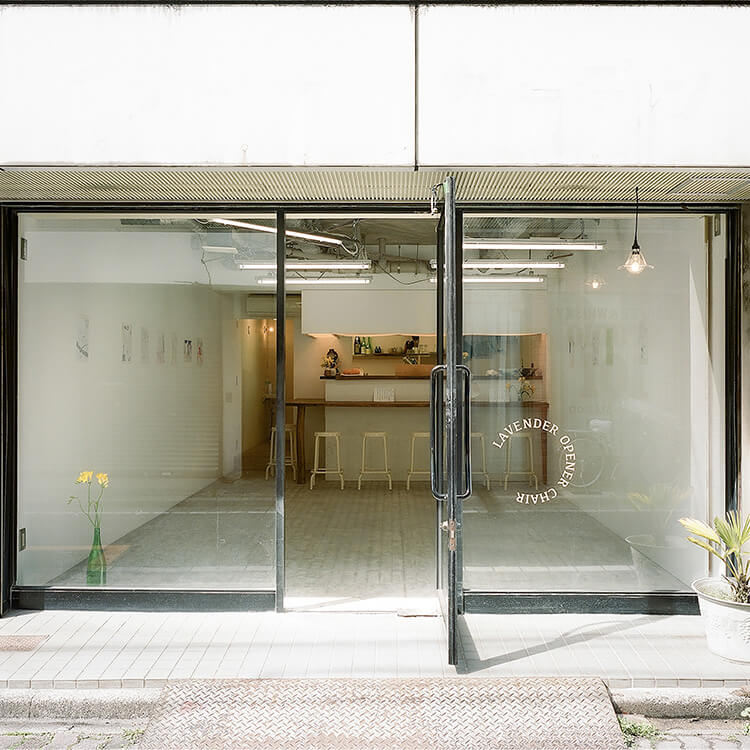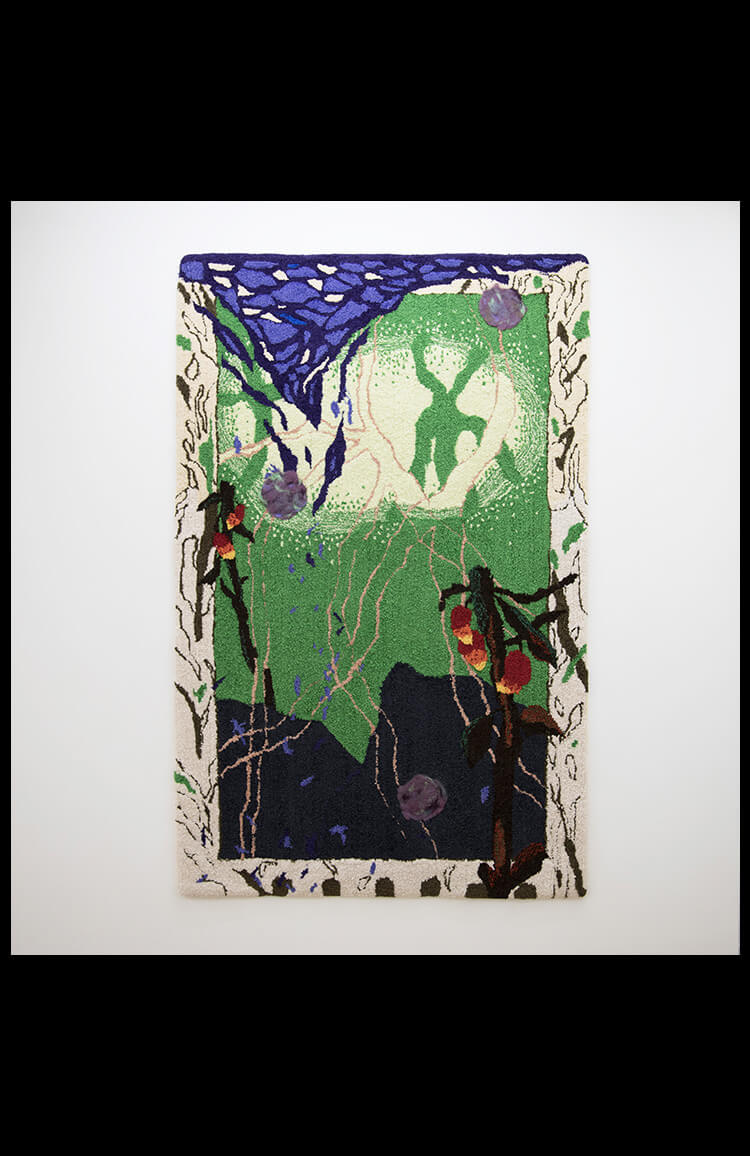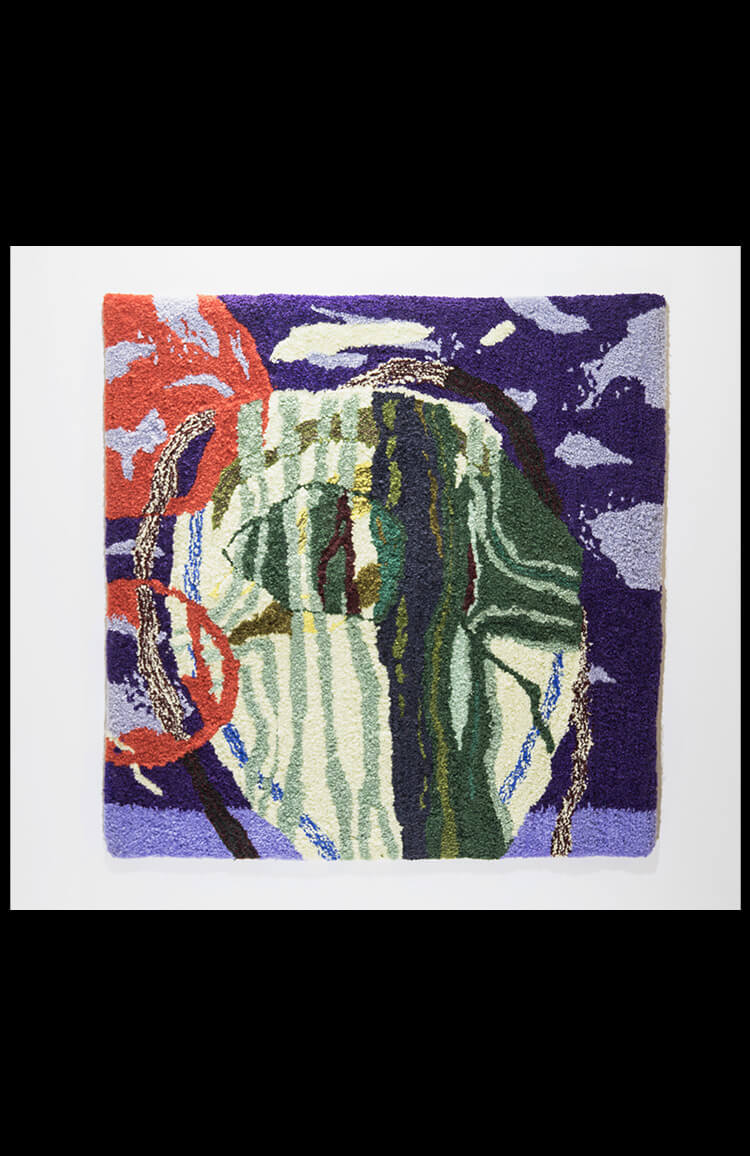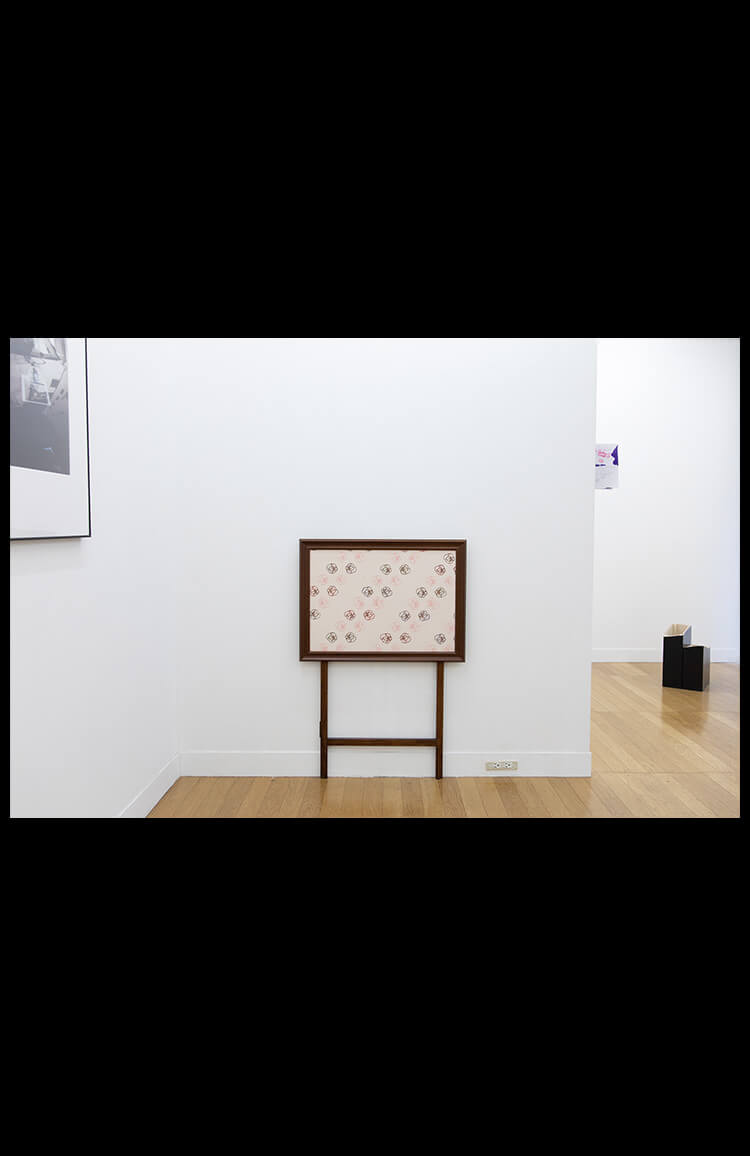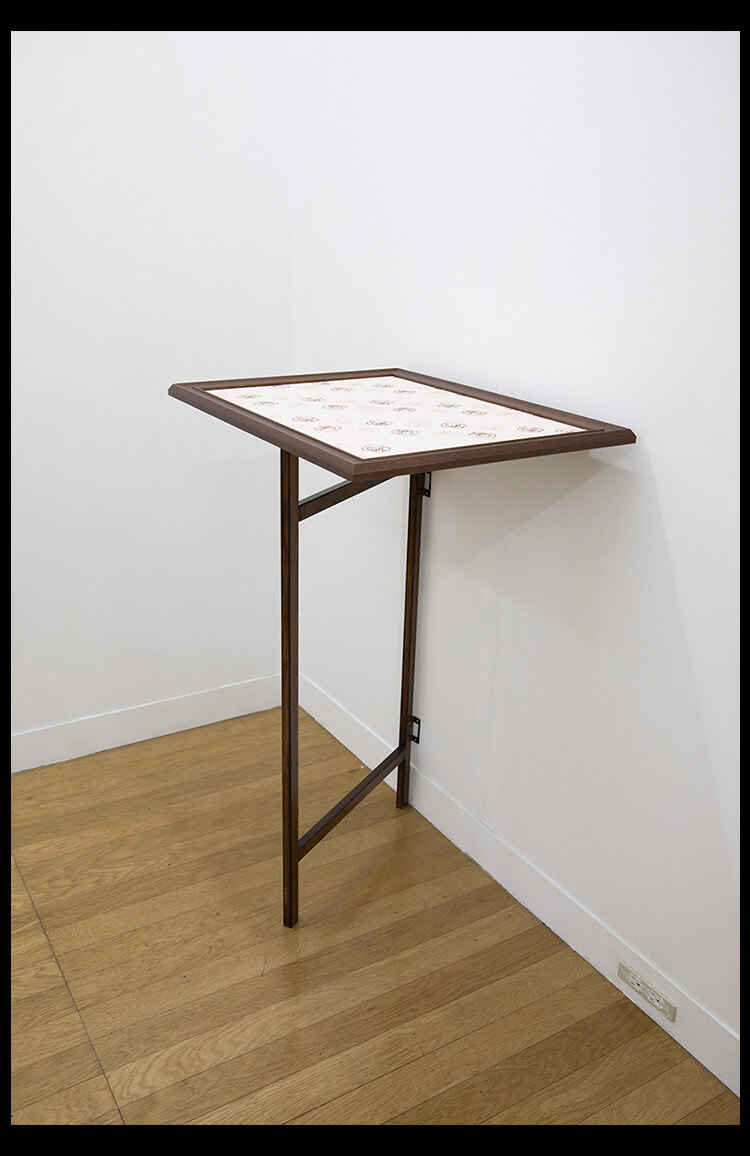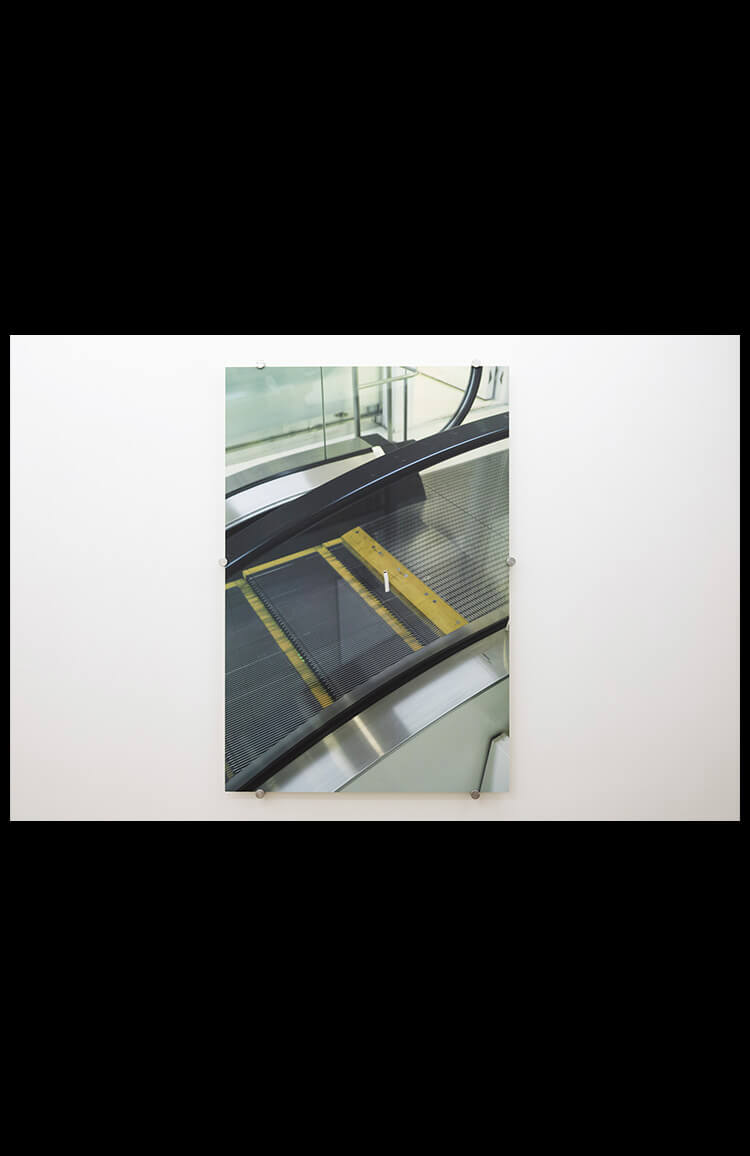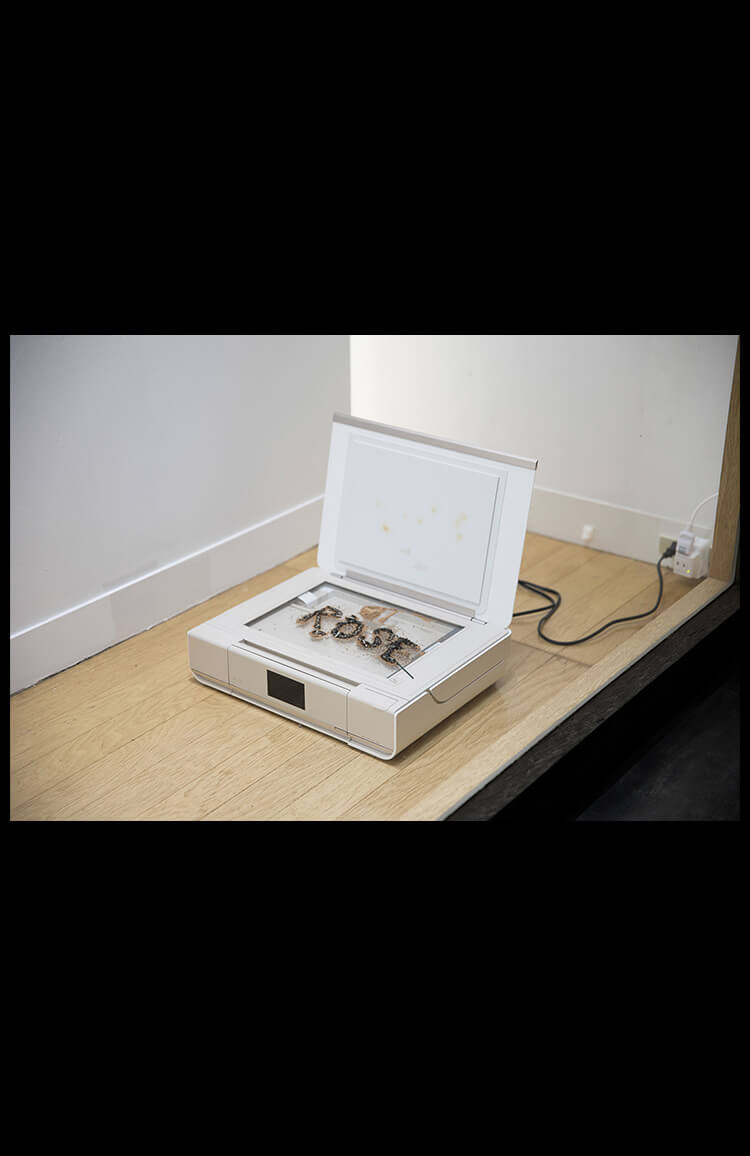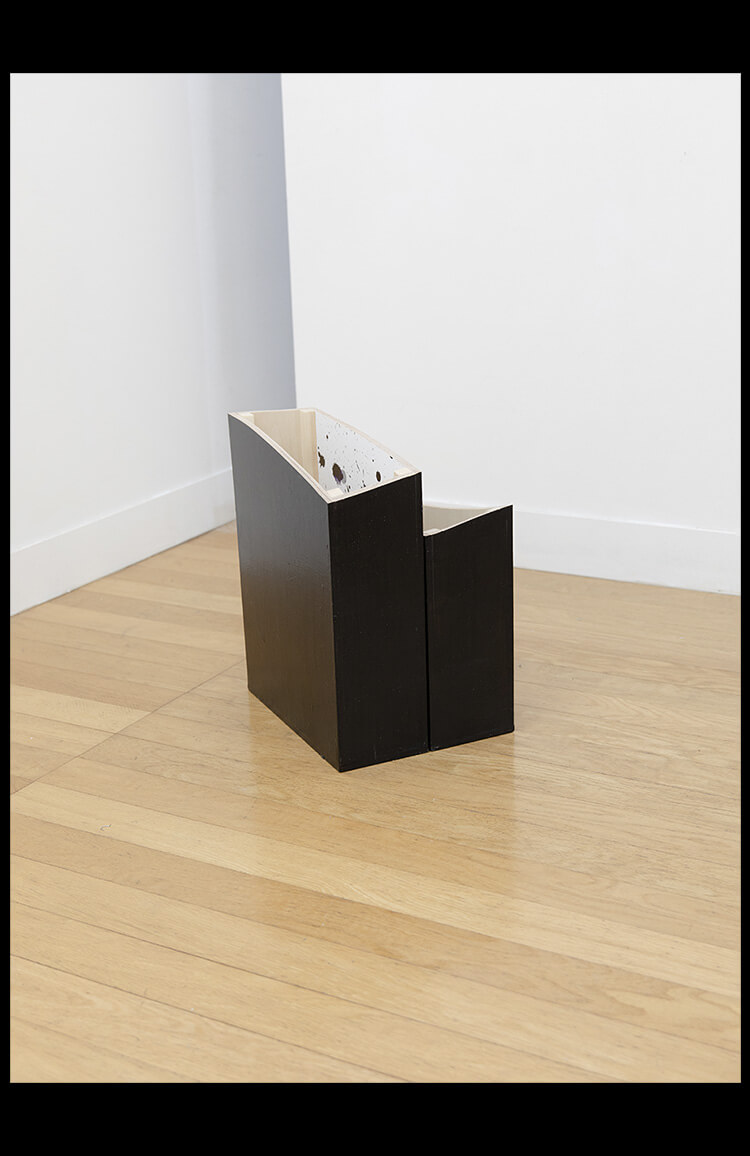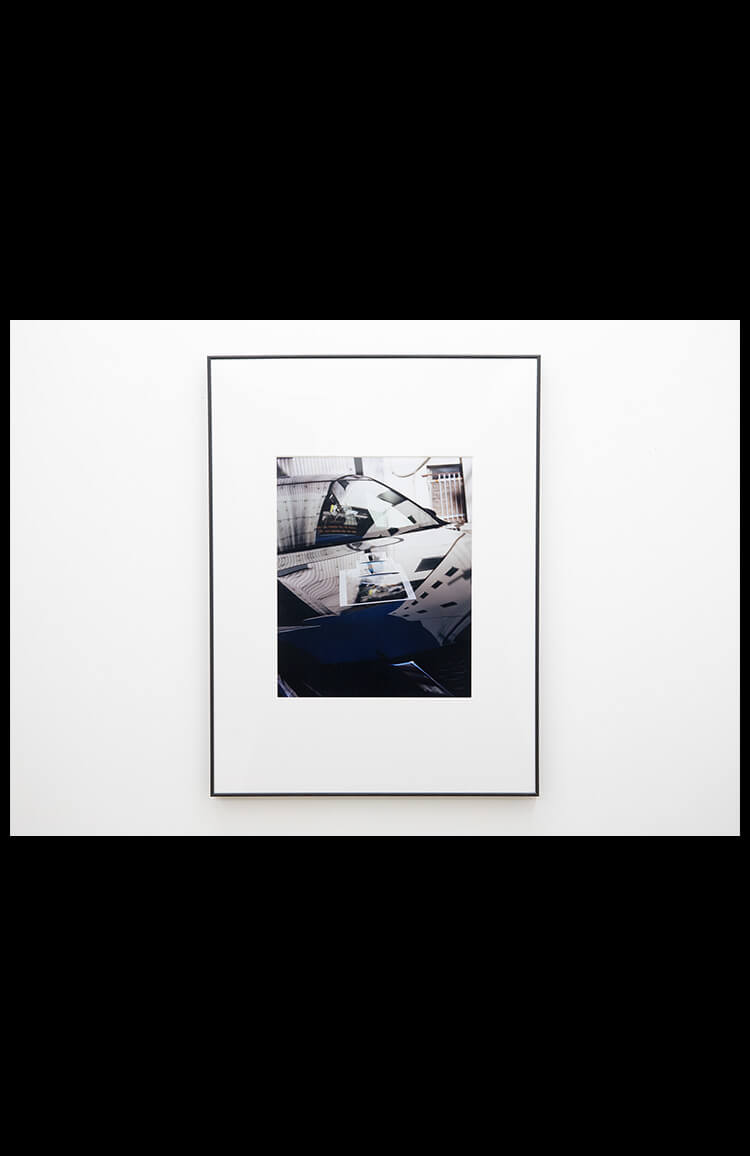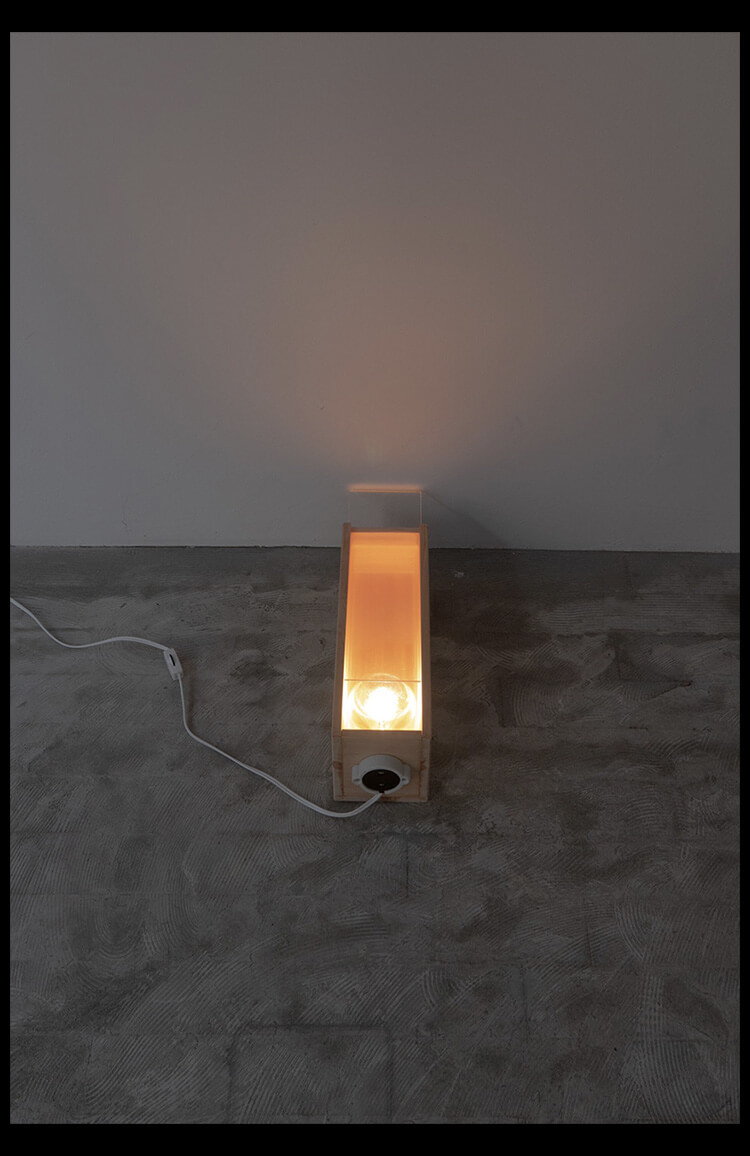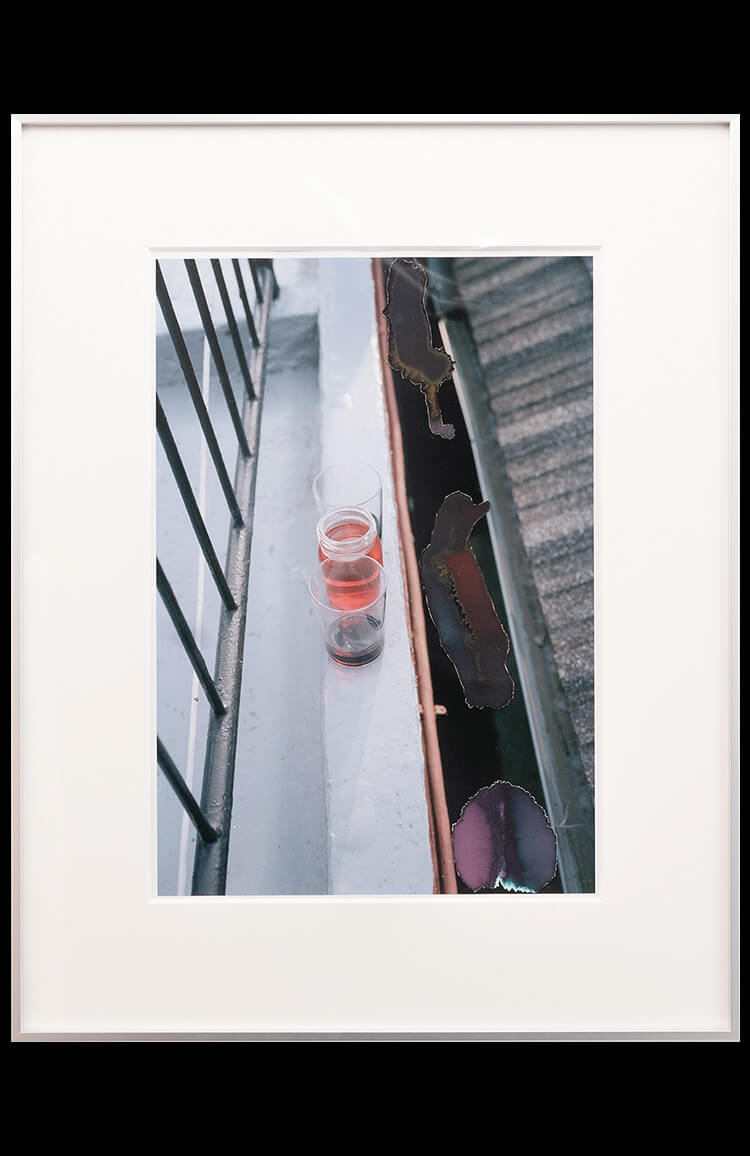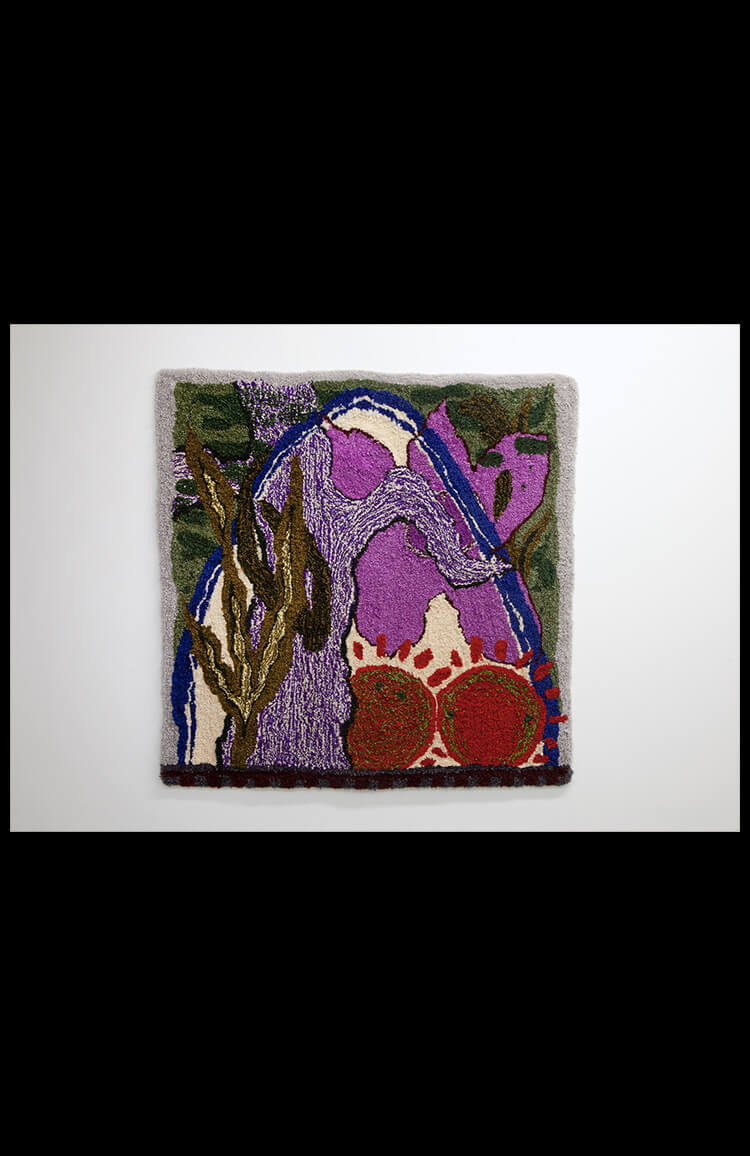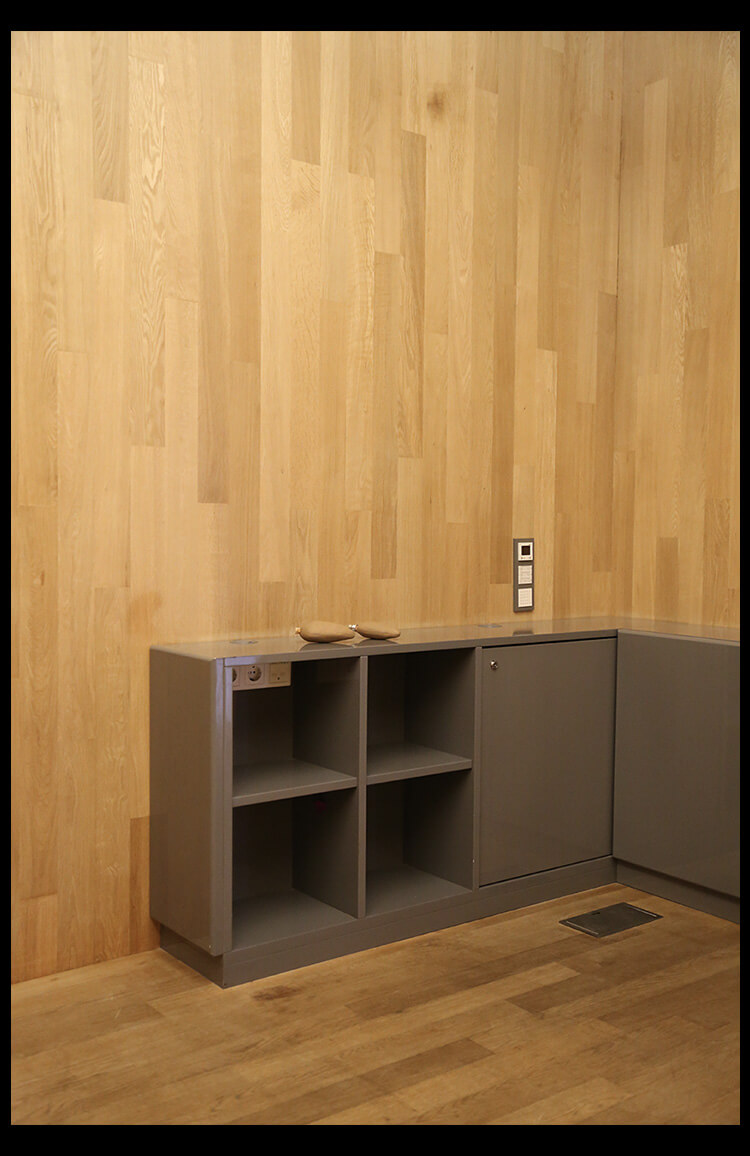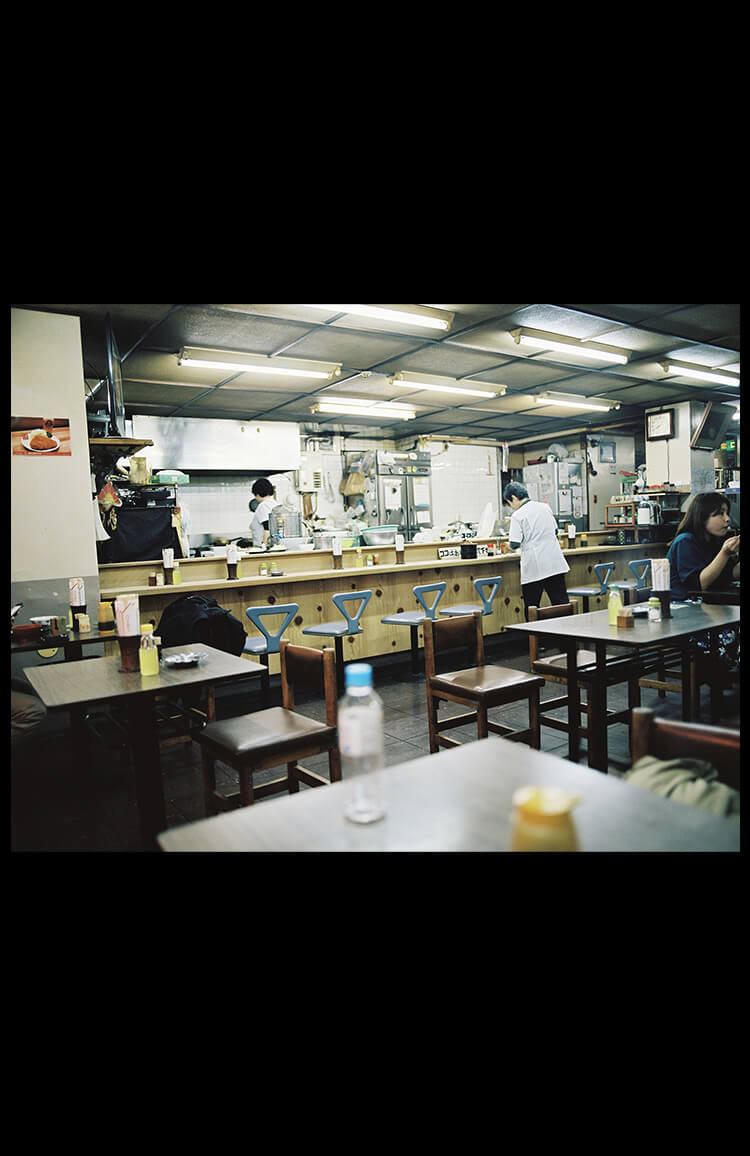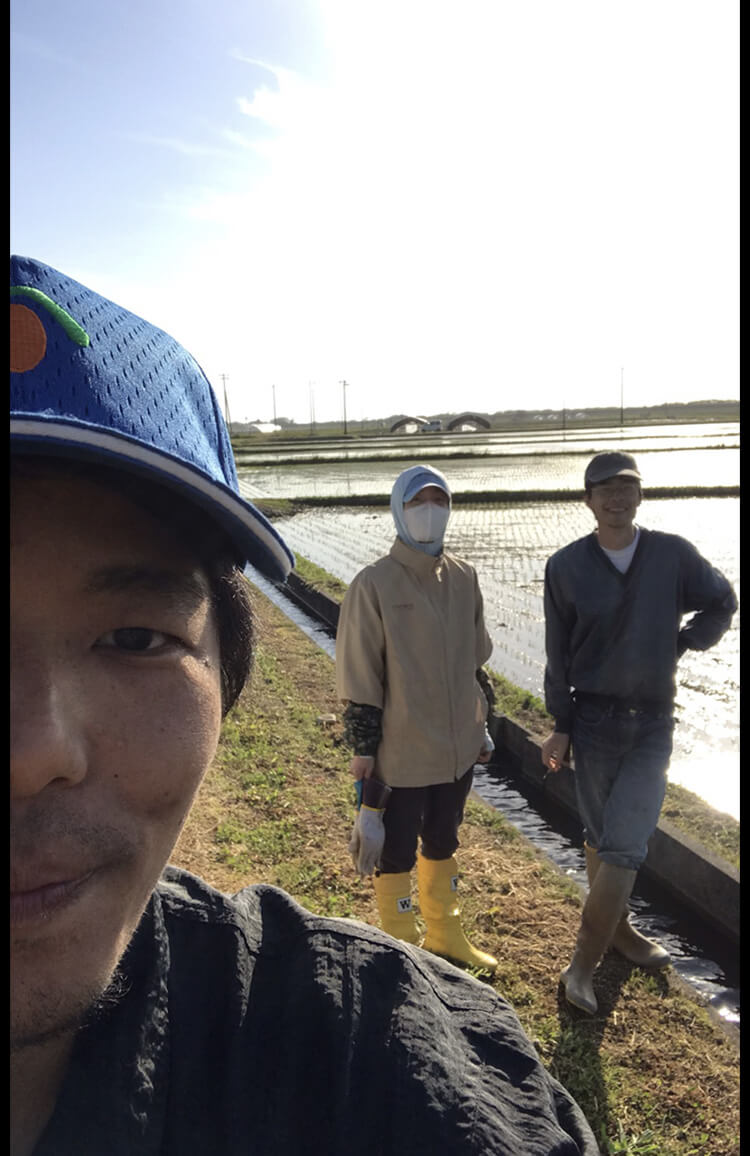TATSUHIKO TOGASHI__Yoko draws very fast. She shows me what she's drawn each time. The initial sketches are already good, but the finished ones have become much better.
IL__How about you Togashi? Your approach to making work is quite different to Yoko. You presented three pieces in this group show, and the media is diverse - photography, sculpture, and drawing - were they all made at the same time?
TT__Yes, they are a new body of works, and I made all of them at the same time.As for Paper on leather, I always had the idea that I would like to make an artwork using a technique of frottage. Around that time, I saw a leather pad, which is for writing signatures and so on, at a fancy hotel's reception desk, and I instantly thought to myself, "drawing something with ink on paper is listed as 'ink on paper’, so this might be known as 'ink on paper on leather.'" *laughs* That’s how I came up with the idea.
The image on the leather is a direct copy of the rose pattern printed on the back of a single-sided piece of red carbon paper. Some of them are burned with a soldering iron and they are coloured with a tricolour biro pens afterwards. Soldering leather creates a toasty smell… I kind of like that too. Paper on leather began as a drawing in my mind, but I decided to refer to the form of a table so that it can become the base for another drawing.
IL__Since you said these pieces were created simultaneously, are they linked to each other in terms of context?
TT__I guess so. BIQLO is a photography piece taken literally at BIQLO*1 in Shinjuku. I saw a piece of white paper, a mouillette (a strip of paper used to sample perfume) get stuck in an escalator at BIQLO. I didn't take any photos at the time, but somehow I couldn't get that scene out of my mind, so I went back there later to recreate the scene. I later went to Isetan, a department store in Shinjuku, Tokyo, to try some perfumes and found Rose & Cuir, a perfume with a rose and leather scent.
A famous perfumer, Jean-Claude Ellena, designed it and what interested me about it is that he didn't use rose at all. What he used instead was a pepper called Nepal Timut pepper which is actually quite prevalent in perfumery. For example, it's quite challenging to extract fragrance from pomegranate, so the scent is usually made by combining different ingredients to recreate its smell synthetically. Rose is a rose is a piece using four different colours found in peppers. I never thought that rose, leather, and pepper would be connected in this way.
IL__Rose is a rose is a sculpture piece where the word “ROSE" is written in leaves and placed on a scanner. The word “ROSE” is currently burning in the gallery where we sit and the room is filled with a pleasant smell; is it the pepper that burning?
TT__This is a raw material for incense. When you mix it with water, it becomes an incense. In Rose is a rose, I mixed it with pepper. When I was thinking of what to use for the incense stand, I heard an interesting story my friend told me about a New York photographer who would use the surface of his scanner to do cocaine. You know, if it's a wooden table or something some of the cocaine granules would get lost in the grain of the wood and therefore be wasted. You may have noticed that a glass table is often used in “snorting” scenes in films. The photographer guy my friend told me about didn't have any glass-surfaced stuff at his home, so he used his scanner instead.
IL__I feel that Watanabe shares a similar approach to making as Togashi; you also presented three artworks in this show that are made with entirely different media, namely: photography, sculpture, and drawing. You don’t have a particular media to use?
YW__I try not to have a specific media. Ideas always come first, and then I choose the most appropriate medium to embody them.
IL__Book is a series of drawings on sheets of paper that are stapled to resemble a book's format. Cars is a photography piece, and Box is a box with a drawing on the inside, cut in half. Are they linked each other?
YW__Strictly speaking, they are not linked. But, because I make them, they might be connected in some context even though their media are different. For example, Book is a drawing piece that referred to a book format; I drew on each page of the book in ink, which was saddle-stitched, and then I rebound it into a side stitched binding. So, the pages you are looking at now were not originally next to each other. In Box, some similar phenomenon happened during the process; the drawing used to be one piece, but became split into two pieces and are now placed back to back.
IL__It seems to me that the process of unfolding is an essential element in your practice.
YW__I guess you’re right. Recently I've been thinking about colour. For Book I made a rule to use only one colour per page spread. The mixture of colours you can see is the ink from other pages seeping through. Originally, each page was divided by colour: violet, peacock blue and paisley grey. I think it's important to be able to name the page after the colour... like you can go back and forth between mediums by colour category. For example, colour is just colour, but when you're describing something, you can characterise it by its colour, like you can say, "please open the green page.” I like that.
IL__Is there anything you guys keep in mind when it comes to making artwork? For example, when I listened to Togashi's story, it seemed to me that sense of smell is important in creating his work.
TT__I don't know if I make artwork while intentionally thinking of a sense of smell, but there was a moment when I realized that everything has smell and taste. For example, Donald Judd's artwork, I think it has a smell, and if you lick it, you would even taste blood. Things became much clearer in my mind after I had this thought.

